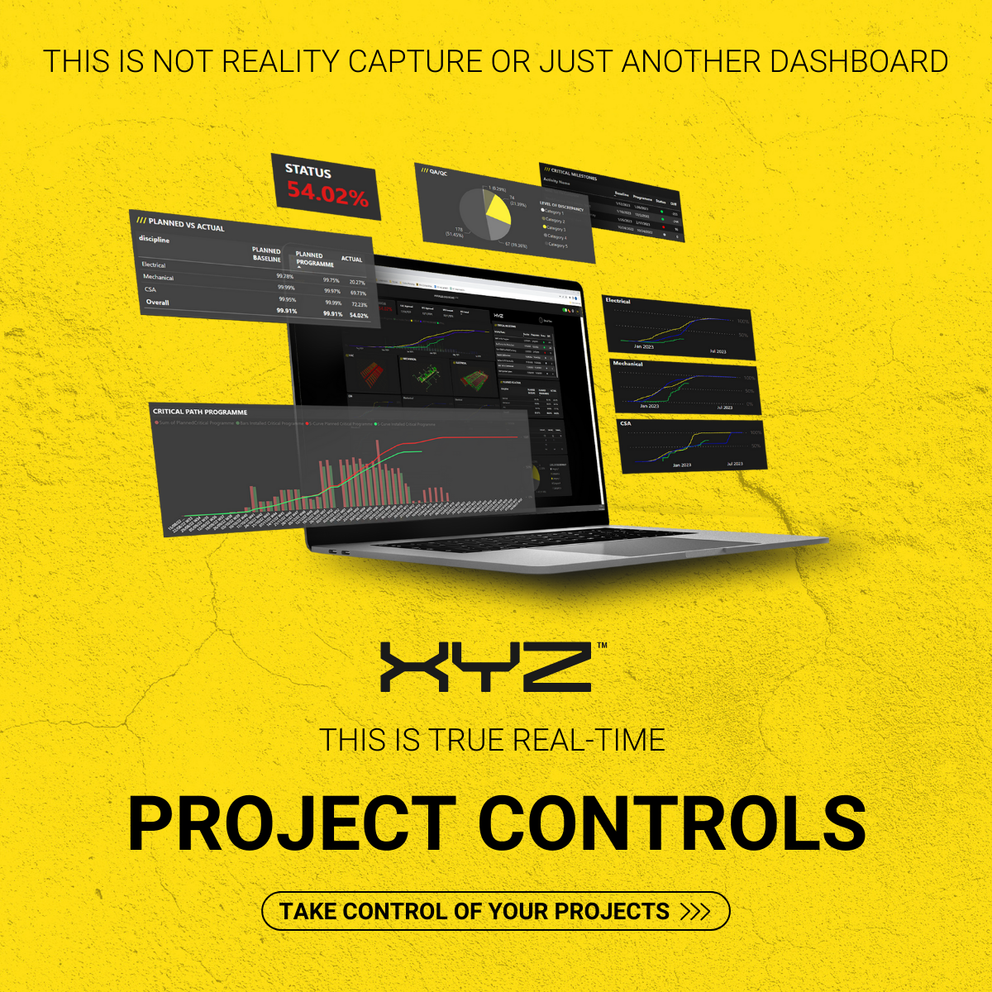-
Services
Services
Find out how we work with our clients and deliver value to construction projects from day one
-
Solutions
Solutions
Discover how all our solutions sync together to deliver construction's most powerful BIM platform to date
-
Built for
Built for
-
Industry
Industry
Understand how we support construction's biggest sectors, and hear from our clients who have experienced the power of XYZ
-
Resources
Resources
Get stuck into all our latest thought leadership, news, reports and industry leading content
-
Company
Company
Dive into what makes XYZ tick, unearth why construction is in our DNA and why we are world leaders in AR solutions

Insights
Understanding the scale of construction’s rework problem

22 September 2022
The costs of error and rework are estimated to be as much as 30% of project costs by some experts. This could mean the industry is wasting hundreds of billions of dollars each year. But research has shown that few – if any – construction companies know the full extent of the issue's impact on their bottom line. In this blog, we examine why so many businesses have such a hard time understanding the implications of a problem that poses such as drastic threat.
In a recent poll conducted by XYZ Reality, 70% of construction stakeholders reported being either ‘concerned’ or ‘very concerned’ about project delays and costs linked directly to rework. And though solid, consistent estimates of the costs of rework are hard to come by, even figures at the bottom end of a very wide range explain why concern is justified.
Assuming error and rework accounts for 5% of total project costs, eradicating the rework issue would be worth a staggering $36.5 billion dollars to the industry each year. Frame that within the more robust GIRI (Get It Right Initiative) estimate and the annual figure would be more than four times that amount, at $153.3 billion.
Whatever the true cost of error and rework, one thing is abundantly clear: with average profit margins of 4% and a host of other challenges, including material and labor shortages and a race to modernize and operate more sustainably, the industry is throwing away more money than it can afford.
Despite the overwhelming incentives for the industry to address its rework problem, very few companies have a good understanding of its scale or the impact it has on their profits. In fact, in its research report, GIRI states that while most businesses recognize there is a cost issue with errors, “it appears that none is clear as to the full extent of those costs.”
Understanding the nature of any problem is half the solution. So why does our industry struggle so much to understand the cost and scale of rework?
Lack of quantitative data
Data is the bedrock of factual information. Without it, assertions are guesswork and decisions are speculative. The main reason that individual organizations within the construction industry are unable to understand the full implications of their errors and rework is because they do not have the data required to tell that story, nor the tools and time needed to gather and process such data.
Lack of standardized systems
The industry’s failure to gather data on rework rests upon a variety of complex factors, one of which is a lack of standardization. For example, a single unifying definition of ‘what rework is’ does not exist, let alone how it should be recorded and dealt with.
Some construction companies record errors identified at handover (defects); others are more interested in ‘latent defects,’ meaning errors identified thereafter. Many of the remaining companies have no system whatsoever for measuring the costs of error, preferring to take a reactive, ad-hoc approach and accepting the concomitant surprises, cost escalations and delays.
This lack of standardization is not just a problem at the industry level, it is also apparent on single projects, where many different trades will be working to their own siloed systems with different processes and expectations.
Overemphasis on defects and latent defects
Although gathering data on the costs of defects is better than having no data at all, such an approach fails to provide a complete picture. The truth is that many errors are corrected long before project handovers take place.
Companies that show a preoccupation with recording the costs of defects alone may do so because of the nature of the handover process, which can act as a prompt. For companies recording only latent defects, this approach is likely to arise from a perception that rectifying such defects has more of an impact on their bottom line.
Failure to recognize indirect costs of error and rework
Where construction companies do have a system for measuring rework costs ahead of handover, those systems are frequently oversimplistic because they focus only on direct costs. Direct costs are internal expenses associated with things like labor, materials and plant.
But what about the indirect costs such as schedule delays affecting other trades? A recent survey suggested that as many as 90% of construction projects are subject to delays, the financial burdens of which are often shouldered by third parties and regularly unaccounted for.
Indirect costs can be much harder to measure than direct costs, but they still amount to waste, and someone is inevitably going to end up paying the price. Overlooking these costs is one of the fundamental reasons why the industry appears to underestimate the full extent of the rework issue.
Unrecorded process waste
The structure of the construction supply chain is so complex that information can easily be lost in the gaps between processes or stakeholders. Poor communication between trades is one way that such information may become buried.
Referred to as unrecorded process waste, the value of errors that are either unknown or knowingly unrecorded is likely to exceed that of direct costs and could be worth as much as $43.8 billion dollars each year.
How augmented reality is tearing up the rulebook
If the industry is to successfully manage its rework problem, data undoubtedly has a crucial role to play. After all, without accurate and comprehensive data, it is impossible to illustrate the efficacy of any measures implemented to address rework.
However, with the introduction of the Atom™, the world’s first Engineering Grade Augmented Reality construction solution, the rework landscape has changed forever.
Turning the linear ‘build, check, put right’ model on its head, the Atom opens the door to proactive real-time validation. It allows users to load and view the 3D model in millimetre accuracy as they work in the field and thus, it can prevent most installation errors from ever occurring in the first place. With the support of XYZ Reality Site Engineers, who act as the eyes and ears of the project team on site, our technology has been shown to reduce rework to a mere 1% of total project value.
Moreover, providing an instantaneous glimpse of where installation is out of tolerance, collecting and analysing validation data once works are completed takes minutes. By contrast, the post-installation validation process could easily extend to weeks, or even months on complex projects when laser scanning is applied.
According to Pascal McErlean, Construction Manager at PM Group, the Atom is a ‘gamechanger.’
“It helps us with constructability,” he says. “It helps us build safer and faster. I think it’s going to be a huge win for the industry as a whole.”
To find out more about the root causes of rework, the steps you can take to mitigate it, and the awesome power of the Atom, download our whitepaper, Rethinking Rework.







